When it comes to providing effective care and treatment, patient comfort plays a vital role. A comfortable environment can contribute to a positive patient experience, improved treatment outcomes, and a sense of trust and well-being. In this article, we explore the benefits of a 2-section treatment table in enhancing patient comfort in medical and therapeutic settings.
1.Cushioned Surface for Relaxation
One of the key features of a 2-section treatment table is its cushioned surface. The main table section is designed with high-quality foam padding, covered in a smooth and comfortable upholstery material. This cushioning provides a soft and supportive surface for patients to lie on during treatments or examinations. The cushioned surface promotes relaxation, allowing patients to feel at ease and comfortable during their time on the table.


Find the right 2-Section Treatment Table
Compare quotes from expert Australian suppliers and make the best choice. It's free, quick and easy!
2. Adjustable Headrest for Personalized Support
The adjustable headrest section of a 2-section treatment table offers personalized support for patients' heads and necks. Healthcare providers can easily adjust the headrest to align with the patient's body and provide optimal comfort. This feature is particularly beneficial in treatments or procedures that require specific head and neck positioning. Patients can rest assured that their comfort is prioritized, as the adjustable headrest allows for individualized support based on their unique needs.
3. Customizable Settings for Individual Preferences
Each patient has different preferences when it comes to comfort. The 2-section treatment table allows for customizable settings to accommodate these preferences. Healthcare providers can adjust the height of the table, allowing patients to easily get on and off the table without strain or discomfort. By offering customizable settings, the treatment table can be tailored to suit the individual needs and preferences of each patient, enhancing their overall comfort during treatments.
4. Stability and Safety for Peace of Mind
Patients' comfort is closely linked to their sense of safety and stability on the treatment table. A 2-section treatment table is designed to provide stability and ensure patients feel secure throughout their procedure. The sturdy construction of the table, combined with non-slip surfaces, minimizes the risk of any unnecessary movements or wobbling. Patients can rest assured that they are in a safe and stable position, allowing them to relax and focus on their treatment without any concerns.


Find the right 2-Section Treatment Table
Compare quotes from expert Australian suppliers and make the best choice. It's free, quick and easy!
5. Positive Therapeutic Environment
Creating a positive and welcoming therapeutic environment is essential for patient comfort. The 2-section treatment table contributes to this environment by offering a comfortable and inviting space for patients. The cushioned surface, adjustable headrest, and customizable settings work together to create a space where patients can feel cared for and supported. This positive therapeutic environment helps foster trust, relaxation, and cooperation between healthcare providers and patients, ultimately enhancing the overall patient experience.
Ergonomic Design Elements for Patient Comfort
In medical and therapeutic settings, patient comfort is a top priority. Creating an environment that promotes relaxation and reduces unnecessary strain is essential for enhancing the patient experience. Ergonomic design elements play a significant role in achieving optimal patient comfort. In this article, we explore key ergonomic design elements that contribute to patient comfort in medical and therapeutic settings.
Cushioned Surfaces
Cushioned surfaces are a fundamental ergonomic design element for patient comfort. Whether it's the main table or additional sections, such as armrests or leg supports, having adequate cushioning provides a soft and supportive surface for patients. High-quality foam padding with comfortable upholstery materials helps distribute the patient's weight evenly, reducing pressure points and promoting overall comfort during treatments or examinations.
Adjustable Features
Adjustability is a crucial aspect of ergonomic design that allows customization to meet individual patient needs. Here are some adjustable features that enhance patient comfort:
- Height Adjustment: An adjustable treatment table allows healthcare providers to set the table at an optimal height, ensuring easy patient access and reducing the need for awkward postures or excessive bending.
- Headrest Angle Adjustment: The ability to adjust the headrest angle ensures proper alignment and support for the patient's head and neck. This feature is particularly important for treatments or procedures that require specific positioning.
- Armrests and Leg Supports: Adjustable armrests and leg supports can be positioned to provide comfortable and stable support for the patient's limbs during treatments or examinations. These adjustable features accommodate patients of different sizes and help reduce muscle tension and discomfort.
Accessibility and Reachability
Ergonomic design elements should facilitate easy accessibility and reachability for healthcare providers while maintaining patient comfort. Consider the following:
- Easy Patient Transfer: The treatment table should have a design that allows for smooth patient transfer on and off the table. This may include features such as adjustable table height, removable armrests, or swing-away leg supports.
- Access to Patient's Body: Healthcare providers should be able to access the patient's body easily without straining or compromising their own comfort. The design should allow for proper body mechanics and minimize excessive reaching or stretching.
Stability and Support
Ensuring stability and support is essential for patient comfort and safety. Patients should feel secure and confident during their time on the treatment table. Consider the following design elements:
- Sturdy Construction: A stable and robust treatment table provides a solid foundation for patients. It should be constructed using high-quality materials to withstand the patient's weight and movements without wobbling or shifting.
- Non-Slip Surfaces: Incorporating non-slip surfaces on the treatment table helps prevent patients from sliding or losing balance during treatments. This feature adds an extra layer of safety and comfort, particularly in procedures where the patient's position may change frequently.
Consideration of Body Contours
Ergonomic design should take into account the contours and natural curves of the human body. By aligning with the body's natural shape, treatment tables can provide optimal support and comfort. This includes contouring the cushioned surfaces to follow the curves of the body, supporting areas such as the lower back, shoulders, and head.
Providing a Relaxing Environment with a 2-Section Treatment Table
In today's fast-paced world, where stress and anxiety are prevalent, creating a relaxing environment in healthcare settings is more crucial than ever. Patients seek not only effective treatments but also a comforting experience during their visits. A key element in achieving this is through the use of 2-section treatment tables. These versatile pieces of equipment play a vital role in transforming clinical spaces into calming havens, making patients feel at ease during their appointments.
Understanding 2-Section Treatment Tables
A 2-section treatment table is a specialized piece of furniture designed to accommodate patients during various medical and therapeutic procedures. It typically consists of two adjustable sections - one for the head and neck area and the other for the body and legs. These tables provide a stable and comfortable surface for patients to lie on during treatments, examinations, or therapy sessions.
Key Features and Benefits
- Adjustability: The ability to adjust the table's sections allows healthcare providers to position patients optimally for different procedures, ensuring maximum comfort and accessibility.
- Support and Stability: 2-section treatment tables are crafted to provide ample support and stability, allowing patients to relax without feeling uneasy during treatments.
- Patient Comfort: With padded surfaces and ergonomic designs, these tables prioritize patient comfort, reducing the discomfort often associated with medical procedures.
Versatility and Applications
2-section treatment tables find applications across various medical fields. They are commonly used in physiotherapy, chiropractic care, massage therapy, and other healthcare practices that involve patient positioning and treatment. Additionally, they are instrumental in diagnostics, minor surgeries, and general examinations.
Designing a Relaxing Environment with 2-Section Treatment Tables
Selecting the appropriate treatment table is essential for creating a relaxing environment. Factors such as patient demographics, treatment requirements, and available space should be considered. Healthcare providers can opt for tables with extra features like motorized adjustments or memory foam padding for added comfort.
Comfort and Padding Options
Comfort is paramount when aiming to provide a relaxing experience for patients. High-quality foam padding and soft upholstery not only enhance comfort but also convey a sense of luxury and care.
Adjustability and Customization
The flexibility to adjust the table to suit individual patient needs can significantly impact their experience. Customizable features like height adjustments and tilting mechanisms are essential for creating an environment of convenience and personalization.
Creating a Soothing Ambiance
Lighting and Color Schemes
The right lighting and color choices can significantly influence the ambiance of a healthcare setting. Soft, warm lighting and calming color palettes can induce relaxation and alleviate anxiety.
Ambient Sounds and Music
Playing soothing ambient sounds or soft music in the background can drown out unpleasant noises and create a tranquil atmosphere.
Aromatherapy and Scents
Aromatherapy using essential oils can further enhance the sense of calmness and promote relaxation. Delicate scents like lavender or chamomile are known for their calming properties.
Integrating Technology for Relaxation
-
Multimedia Integration
Modern treatment tables often come with multimedia integration, allowing patients to listen to music, watch videos, or engage in mindfulness exercises during treatments.
-
Built-in Heat and Massage Functions
Tables equipped with built-in heat and massage functions offer additional therapeutic benefits, easing tension and promoting relaxation.
-
Remote Control and User-Friendly Interface
User-friendly interfaces and remote controls allow patients to adjust the table settings according to their preferences, giving them a sense of control and comfort.
Promoting Patient Well-Being
Reducing Anxiety and Stress
A relaxing environment with the aid of 2-section treatment tables can significantly reduce patient anxiety and stress levels, making their experience more positive.
-
Enhancing Treatment Efficacy
When patients are relaxed and comfortable, treatment outcomes are often improved due to better cooperation and reduced muscle tension.
-
Improving Patient Satisfaction
A positive and relaxing healthcare experience can lead to higher patient satisfaction rates and increased loyalty towards the healthcare provider.
In conclusion, incorporating 2-section treatment tables into medical and therapeutic settings brings numerous benefits that greatly enhance patient comfort. The cushioned surface promotes relaxation and ease during treatments, while the adjustable headrest provides personalized support for each patient. Customizable settings cater to individual preferences, ensuring a comfortable experience for all. The stability and safety of these tables instill peace of mind in patients, fostering a positive therapeutic environment. When combined with other ergonomic design elements and a soothing ambiance, the 2-section treatment table not only improves patient comfort but also positively impacts treatment efficacy and overall patient satisfaction. By prioritizing patient comfort, healthcare providers can create a relaxing haven that promotes well-being and trust between patients and caregivers.


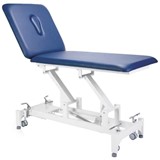

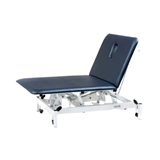

-160x160-state_article-rel-cat.png)

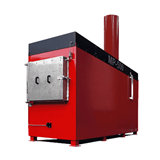



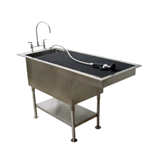

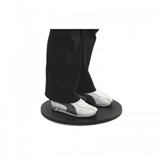
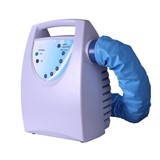


-205x205.png)
